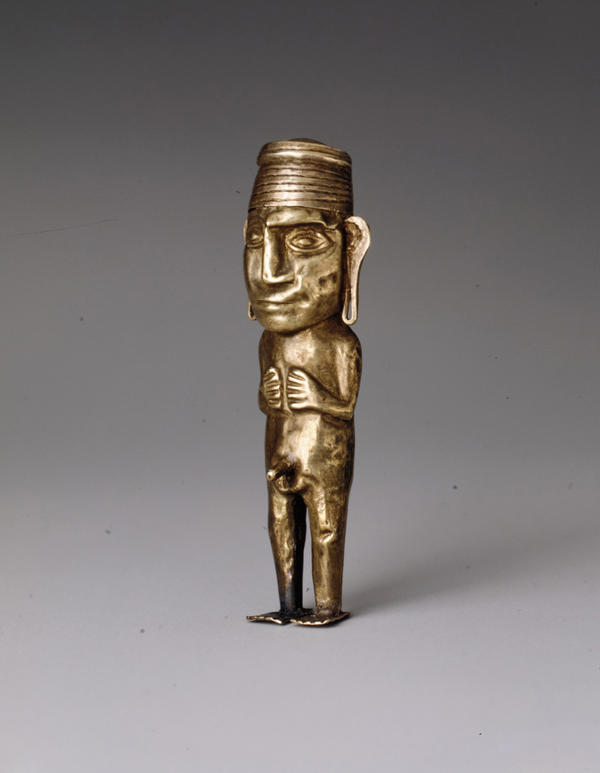Inca Art
The Inca Empire, flourishing in Peru from roughly 1425 to 1532, produced some of the most remarkable art in the ancient Americas. Their artistry wasn’t just beautiful; it was deeply practical and served a significant role in their society and religion.

They inherited and adapted artistic styles from cultures that existed for millennia before them. They took what resonated with them and incorporated it into their own artistic identity. A defining characteristic of Inca art is its practicality. The Incas were skilled artisans who used readily available natural materials to create functional objects imbued with artistic excellence. Much of their art served a purpose in everyday life and held religious significance.
The Inca social structure revolved around ayllus, extended family units. These ayllus often specialized in specific art forms, like pottery or textiles. Their productions were then distributed throughout the vast empire, reflecting a centralized economic system. Additionally, specialized artisans crafted exquisite jewelry and clothing for the Inca nobility and the Sapa Inca, the emperor himself.
Textiles
Using a simple but ingenious backstrap loom, Inca weavers achieved remarkable feats. They meticulously interlaced cotton and alpaca wool threads, creating intricate designs that incorporated geometric shapes and symbolic imagery.

These designs might depict anything from deities and mythological creatures to geometric representations of the Inca worldview. The vibrant colors, derived from natural sources like cochineal beetles and indigo plants, added another layer of significance. These textiles weren’t just beautiful; they served multiple purposes, functioning as clothing, religious offerings, and a record-keeping system known as quipu wamani where complex knots encoded information. Inca textiles were so highly valued that they were considered a form of currency and a symbol of social status.



Metalwork
The Incas were true virtuosos when it came to working with metals, particularly gold and silver. They obtained these precious materials through trade and tribute, and their techniques were nothing short of impressive. They employed hammering to shape the metal, annealing to make it more pliable, and repoussé to create intricate raised designs on the surface.

Their skill is evident in everything from exquisite jewelry adorned with precious stones to statues depicting deities and royal figures. Beyond the aesthetics, metalwork also served practical purposes. The Incas crafted tools, weapons, and even armor from these metals, showcasing their ingenuity and ability to turn artistic expression into functional objects. The Spanish conquistadors were so impressed by the quality of Inca metalwork that they melted down a significant amount to be cast into their own coins.



Ceramics
Inca pottery transcended mere functionality. Inca potters were highly skilled artisans who developed techniques to create an incredibly smooth and polished finish on their vessels. This meticulous attention to detail elevated their pottery from utilitarian objects to works of art. A hallmark of Inca ceramics is the use of geometric designs. Straight lines, squares, triangles, and frets were masterfully arranged to create visually engaging patterns.






However, Inca potters weren’t limited to geometric forms. They sometimes incorporated representational imagery of animals important to their culture, scenes from daily life, or symbolic motifs related to their beliefs. The shapes of the vessels themselves were just as varied, with wide-mouthed jars for storage, elaborately designed cups for drinking, and even specialized vessels used for religious ceremonies.
Stonework
The Inca mastery of stonework is evident in their awe-inspiring architecture, but their techniques go beyond mere construction. They were able to cut massive stones with incredible precision, often quarrying them from great distances and transporting them to construction sites without the aid of modern machinery. It’s believed they used harder stones and possibly abrasives to achieve such accuracy.

One of the most remarkable aspects of Inca stonework is their use of dry-stone construction. These structures were built without mortar, relying instead on the stones being cut to fit together so perfectly that they interlocked like puzzle pieces. This technique required meticulous planning and craftsmanship and resulted in structures of immense strength that have withstood centuries of earthquakes. The Incas also employed stone carving to create decorative elements like friezes and statues. These carvings depicted a variety of subjects, including religious figures, geometric designs, and even quipus, the knotted recording device used by the Incas. In essence, Inca stonework wasn’t just about building; it was about creating a lasting legacy etched in stone.



